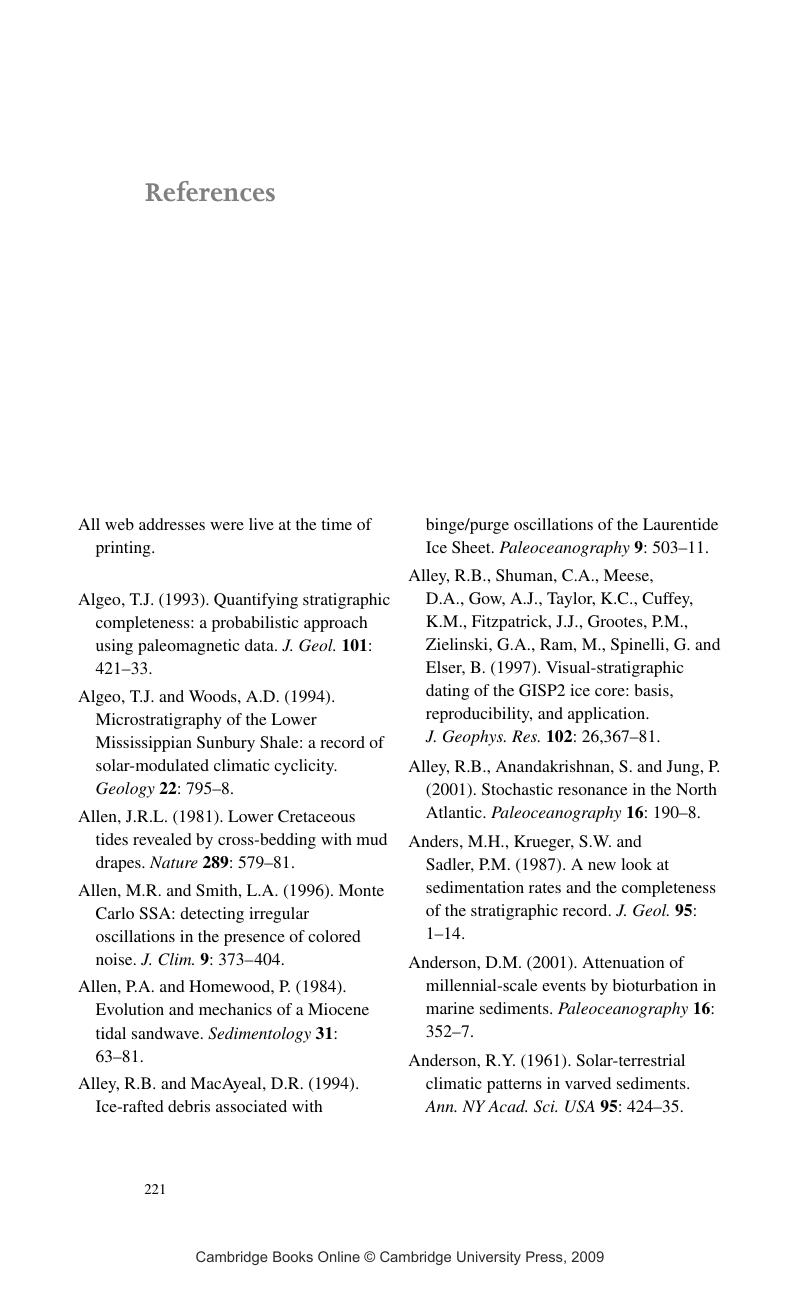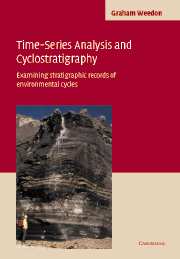Book contents
- Frontmatter
- Contents
- Preface
- Acknowledgements
- Chapter 1 Introduction
- Chapter 2 Constructing time series in cyclostratigraphy
- Chapter 3 Spectral estimation
- Chapter 4 Additional methods of time-series analysis
- Chapter 5 Practical considerations
- Chapter 6 Environmental cycles recorded stratigraphically
- Appendix – published algorithms for time-series analysis
- References
- Index
- References
References
Published online by Cambridge University Press: 13 August 2009
- Frontmatter
- Contents
- Preface
- Acknowledgements
- Chapter 1 Introduction
- Chapter 2 Constructing time series in cyclostratigraphy
- Chapter 3 Spectral estimation
- Chapter 4 Additional methods of time-series analysis
- Chapter 5 Practical considerations
- Chapter 6 Environmental cycles recorded stratigraphically
- Appendix – published algorithms for time-series analysis
- References
- Index
- References
Summary

Information
- Type
- Chapter
- Information
- Time-Series Analysis and CyclostratigraphyExamining Stratigraphic Records of Environmental Cycles, pp. 221 - 251Publisher: Cambridge University PressPrint publication year: 2003
